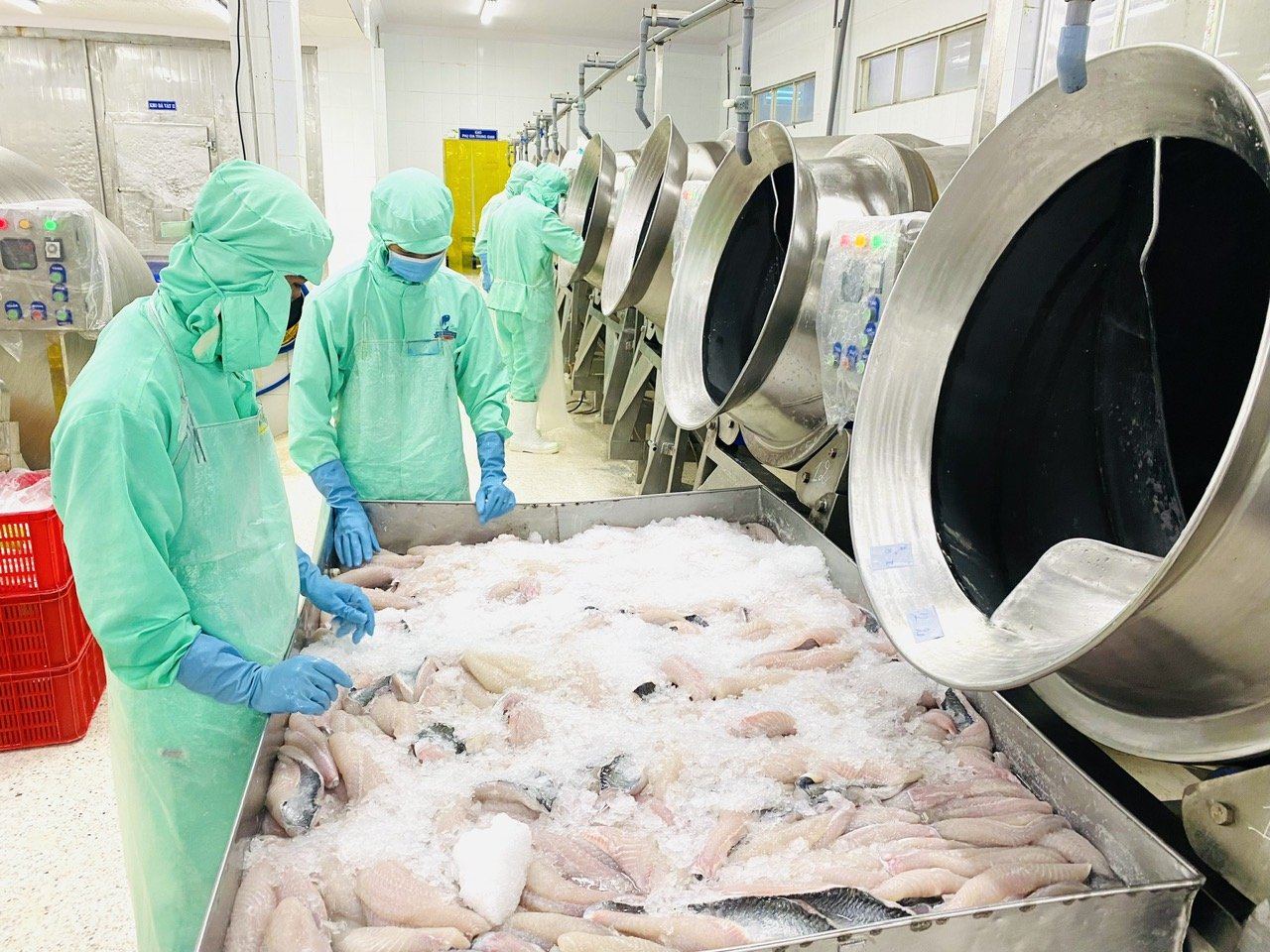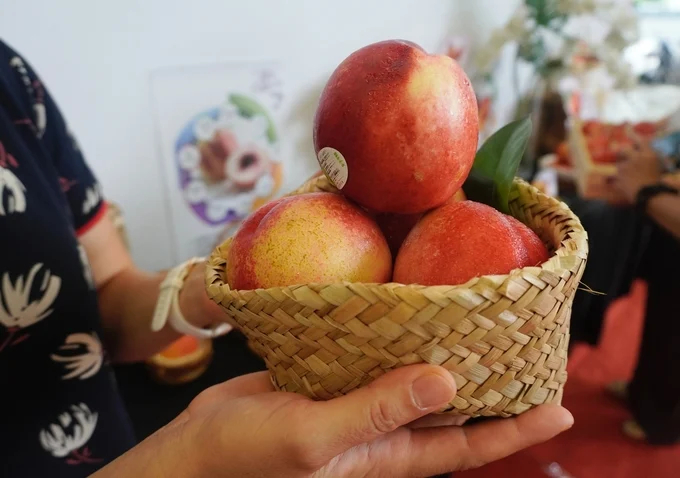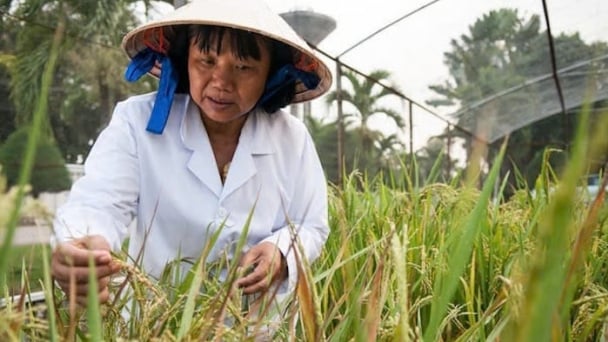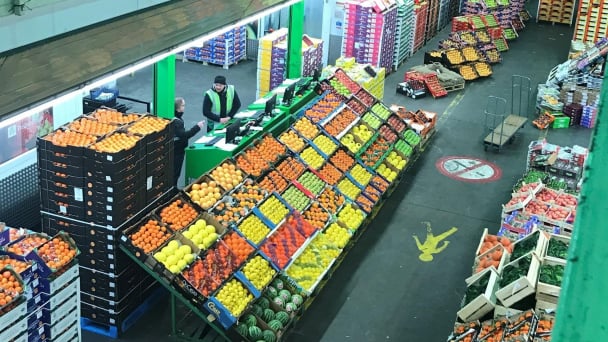May 16, 2025 | 10:30 GMT +7
May 16, 2025 | 10:30 GMT +7
Hotline: 0913.378.918
May 16, 2025 | 10:30 GMT +7
Hotline: 0913.378.918
A reporter from the Vietnam Agriculture and Nature News sat down with Mr. Do Ngoc Hung, Trade Counsellor and Head of the Vietnam Trade Office in the United States, to gain deeper insights into the Vietnamese agricultural products with competitive advantages in the U.S. market, as well as the latest consumer trends in this important destination.
Could you share some recent figures on Vietnam’s agricultural exports to the United States? Which products currently hold the strongest competitive advantages?
The United States is currently the largest export market for Vietnam’s agricultural, forestry, and fishery (AFF) products. In 2024, Vietnam’s AFF export turnover to the U.S. reached approximately USD 13.5 billion, accounting for 21.7% of the country’s total AFF exports worldwide—an increase of nearly 25% in value compared to the previous year.

Mr. Do Ngoc Hung, Commercial Counselor, Head of Vietnam Trade Office in the United States.
Of this, exports of wood and wood products alone amounted to USD 9.1 billion, equivalent to 123% of the 2023 figure. Seafood exports reached USD 1.8 billion, including shrimp (USD 755.6 million), pangasius (USD 345 million), and tuna (around USD 387.6 million).
Export turnover for several other key agricultural products to the U.S. also rose in 2024 compared to 2023. Notable figures include cashew nuts exceeding USD 1 billion, coffee at USD 318.7 million, fruits and vegetables at USD 335 million, pepper at USD 399.5 million, and rice at USD 31.4 million.
In the first two months of 2025, the U.S. has remained Vietnam’s largest market for agricultural exports, accounting for 22% of total AFF export turnover. Among the most competitively advantaged Vietnamese products in this market are pangasius and wood products. While fruits and vegetables do not yet contribute a large export value, they are showing rapid growth.
What are the current consumption trends for agricultural products in the U.S. market?
The United States is both the world’s leading exporter and the largest importer of agricultural products, with import values reaching around USD 200 billion in 2024. This demonstrates the vast scale and capacity of the U.S. food and agricultural consumption market.
Several product categories account for a significant share of imports, including tropical agricultural products, spices, fresh fruits and vegetables, tree nuts, fruit juices, and seafood. These are also the product groups in which Vietnam holds strong export potential.

Vietnam's pangasius exports to the US in 2024 will reach 345 million USD, up 27% compared to 2023. Photo: Hong Tham.
This is a market with high purchasing power and diverse consumer needs. Notably, younger generations are showing growing interest in exotic and unique specialty products. However, rising inflation has led to increased food prices, prompting consumers to become more budget-conscious and selective in their purchasing decisions.
American consumers are shifting toward alternative protein sources such as chicken, pork, and farmed fish instead of wild-caught seafood to better fit household budgets. Ready-to-eat and easy-to-prepare food products are also gaining popularity.
Imported food and agricultural products in this market can vary widely in type and price, but food safety standards are non-negotiable. The U.S. enforces a highly rigorous legal and regulatory system through multiple government agencies. In recent years, American consumers have also shown heightened concern for product traceability, particularly with agricultural goods.
Additionally, there is a growing trend in the U.S. toward organic and plant-based foods, reflecting rising awareness of environmental issues and a broader shift toward health-conscious lifestyles.
How are U.S. agricultural products currently present in the Vietnamese market?
Vietnam is among the major importers of U.S. agricultural products, with total import turnover reaching USD 3.4 billion in 2024. This includes cotton (USD 680 million), fruits and vegetables (USD 540 million), soybeans (USD 464 million), wood (USD 325 million), animal feed (USD 300 million), and wheat (USD 150 million). Vietnamese consumers show a strong preference for U.S. fruits, beef, and pork.
Is there a risk that some Vietnamese agricultural products could face higher tariffs or stricter technical barriers? How do you assess these challenges?
April 2, 2025, marks the date when the administration of President Donald Trump is expected to announce retaliatory tariffs for individual countries. The U.S. Department of Commerce and the Office of the United States Trade Representative (USTR) are still reviewing and calculating specific tariff rates based on trade surplus levels and the extent to which each country imposes high tariffs on corresponding U.S. goods.
These countervailing measures will consider not only import duties but also value-added taxes, export subsidies, technical barriers, and trade practices deemed unfair.
As of now, no detailed information has been released regarding specific tariff rates or targeted product categories. However, it is certain that such measures will have an impact on Vietnam’s agricultural, forestry, and fishery exports to the U.S. The frequent shifts in the current administration’s trade and tariff policies pose a challenge for Vietnamese enterprises in predicting developments and formulating timely responses, potentially hindering their long-term market development strategies.
What advice would the Vietnam Trade Office offer to agricultural businesses looking to approach the U.S. market amid growing trade and tariff uncertainty?
Given the complexities of U.S. trade and tariff policies, Vietnamese agricultural enterprises need to develop adaptive strategies to maintain and expand their market share. This includes closely monitoring market developments and staying up-to-date with new trade policies that could affect agricultural exports.

Vietnamese consumers prefer American fruits. Photo: Hong Tham.
Businesses should prioritize improving product quality and meeting stringent U.S. standards on food safety and animal-plant quarantine. Strict control over pesticide residues, heavy metals, and microbial contaminants is essential to avoid import rejections or prolonged inspection procedures at ports of entry. They must also ensure traceability of product origin and maintain detailed records on farming areas, processing facilities, and transportation.
Rather than relying solely on raw material exports, companies should move toward higher-value processing. Investments in value-added products such as dried fruit, juices, processed seafood, and fruit powders can help diversify offerings, enable year-round supply, and enhance the competitiveness of Vietnamese agriculture in the U.S.
It is also crucial to participate in major U.S. trade shows such as the North American Seafood Expo, Fancy Food Show, and Natural Products Expo. These events offer opportunities to connect directly with customers and experienced importers who understand U.S. regulations, thereby minimizing legal risks. Efforts should also be made to integrate Vietnamese goods into U.S. distribution systems.
Boosting the application of e-commerce, organizing online trade promotion events, and strengthening virtual trade connections can help overcome geographical limitations and reduce market entry barriers.
Vietnamese businesses should also consider forming joint ventures or partnerships with U.S. firms, using American technology and raw materials in their processing chains. U.S. partners have the best understanding of local consumer preferences and regulatory requirements, and they can offer valuable advice on how to tailor products for the American market. Furthermore, the U.S. encourages the use of its technology through incentives tied to scientific advancements and chain-of-custody supervision, aimed at ensuring product quality and enhancing transparency.
With the current trend toward domestic production protection and the rising volume of Vietnamese agricultural exports to the U.S., the risk of facing trade defense measures is growing. This includes anti-dumping and anti-subsidy investigations on shrimp, pangasius, honey, and inquiries into tariff circumvention and origin of wood products—targeting both businesses and the Vietnamese government.
Thank you !
Translated by Linh Linh
![Multi-channel, multi-directional Vietnamese agricultural markets: [6] Agri products go online](https://t.ex-cdn.com/nongnghiepmoitruong.vn/608w/files/content/2024/12/10/1-113313_954.jpg)
(VAN) Bringing agri products onto e-commerce platforms is an effective way to build a brand that many businesses, cooperatives, and agricultural production households are doing.

(VAN) Veterinary training should focus on quality, not just quantity. Veterinarians also need more options to pursue specialized training.

(VAN) The veterinary industry needs to be viewed objectively and further invested in to properly demonstrate its role and importance in the new context.

(VAN) The number of veterinarians graduating each year is not enough to meet actual needs, hence a difficult problem for the growing livestock industry.

(VAN) The strategic partnership between Cambodia, the Philippines, Vietnam, and CGIAR ensures that innovative solutions effectively address national priorities for food system development.

(VAN) This was affirmed by the UK Minister of State at the Department for Environment, Food and Rural Affairs during a working session with Deputy Minister Tran Thanh Nam on May 13.

(VAN) On May 13, the Ministry of Agriculture and Environment, in coordination with the Embassy of Vietnam in the United Kingdom, organized a seminar titled 'Connecting trade in Vietnam-UK agricultural, forestry, and fishery products'.